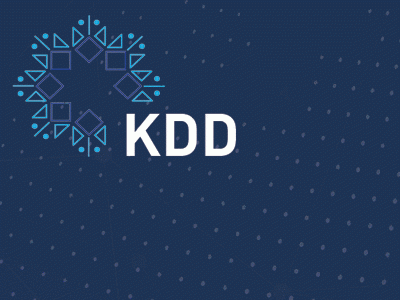2015 KDD Test of Time Award Winners
2015 KDD Test of Time Award AwardThe KDD Test of Time Award recognizes outstanding papers from past KDD Conferences beyond the last decade that have had an important impact on the data mining research community.
Thorsten Joachims
Optimizing Search Engines using Clickthrough Data, KDD 2002

The paper introduced the problem of ranking documents w.r.t. a query using not explicit user feedback but implicit user feedback in the form of clickthrough data. The author presented the Ranking SVM Algorithm to solve the proposed ranking problem. The paper has stimulated much follow-up research, and the Ranking SVM Algorithm has been widely used for many applications, as evidenced by the very large number of citations. The work has also been included in various textbooks.
ORIGINAL ABSTRACT
This paper presents an approach to automatically optimizing the retrieval quality of search engines using clickthrough data. Intuitively, a good information retrieval system should present relevant documents high in the ranking, with less relevant documents following below. While previous approaches to learning retrieval functions from examples exist, they typically require training data generated from relevance judgments by experts. This makes them difficult and expensive to apply. The goal of this paper is to develop a method that utilizes clickthrough data for training, namely the query-log of the search engine in connection with the log of links the users clicked on in the presented ranking. Such clickthrough data is available in abundance and can be recorded at very low cost. Taking a Support Vector Machine (SVM) approach, this paper presents a method for learning retrieval functions. From a theoretical perspective, this method is shown to be well-founded in a risk minimization framework. Furthermore, it is shown to be feasible even for large sets of queries and features. The theoretical results are verified in a controlled experiment. It shows that the method can effectively adapt the retrieval function of a meta-search engine to a particular group of users, outperforming Google in terms of retrieval quality after only a couple of hundred training examples.
Pedro Domingos and Geoff Hulten
Mining High-Speed Data Streams, KDD 2000

This paper proposes a decision tree learner for data streams, the Hoeffding Tree algorithm, which comes with the guarantee that the learned decision tree is asymptotically nearly identical to that of a non-incremental learner using infinitely many examples. This work constitutes a significant step in developing methodology suitable for modern ‘big data’ challenges and has initiated a lot of follow-up research. The Hoeffding Tree algorithm has been covered in various textbooks and is available in several public domain tools, including the WEKA Data Mining platform.
ORIGINAL ABSTRACT
Many organizations today have more than very large databases; they have databases that grow without limit at a rate of several million records per day. Mining these continuous data streams brings unique opportunities, but also new challenges. This paper describes and evaluates VFDT, an anytime system that builds decision trees using constant memory and constant time per example. VFDT can incorporate tens of thousands of examples per second using off-the-shelf hardware. It uses Hoeffding bounds to guarantee that its output is asymptotically nearly identical to that of a conventional learner. We study VFDT’s properties and demonstrate its utility through an extensive set of experiments on synthetic data. We apply VFDT to mining the continuous stream of Web access data from the whole University of Washington main campus.
Minqing Hu and Bing Liu
Mining and summarizing customer reviews, KDD 2004

The paper introduces the problem of summarizing customer reviews and decomposes the problem into the three steps of (1) mining product features (aspects), (2) identifying opinion sentences and their corresponding feature in each review and (3) summarizing the results. The paper has inspired the new research direction of Aspect-Based Sentiment Analysis/Aspect-Based Opinion Mining, and the proposed framework has been widely adopted in research and applications, as seen from the very large number of citations.
ORIGINAL ABSTRACT
Merchants selling products on the Web often ask their customers to review the products that they have purchased and the associated services. As e-commerce is becoming more and more popular, the number of customer reviews that a product receives grows rapidly. For a popular product, the number of reviews can be in hundreds or even thousands. This makes it difficult for a potential customer to read them to make an informed decision on whether to purchase the product. It also makes it difficult for the manufacturer of the product to keep track and to manage customer opinions. For the manufacturer, there are additional difficulties because many merchant sites may sell the same product and the manufacturer normally produces many kinds of products. In this research, we aim to mine and to summarize all the customer reviews of a product. This summarization task is different from traditional text summarization because we only mine the features of the product on which the customers have expressed their opinions and whether the opinions are positive or negative. We do not summarize the reviews by selecting a subset or rewrite some of the original sentences from the reviews to capture the main points as in the classic text summarization. Our task is performed in three steps: (1) mining product features that have been commented on by customers; (2) identifying opinion sentences in each review and deciding whether each opinion sentence is positive or negative; (3) summarizing the results. This paper proposes several novel techniques to perform these tasks. Our experimental results using reviews of a number of products sold online demonstrate the effectiveness of the techniques.



